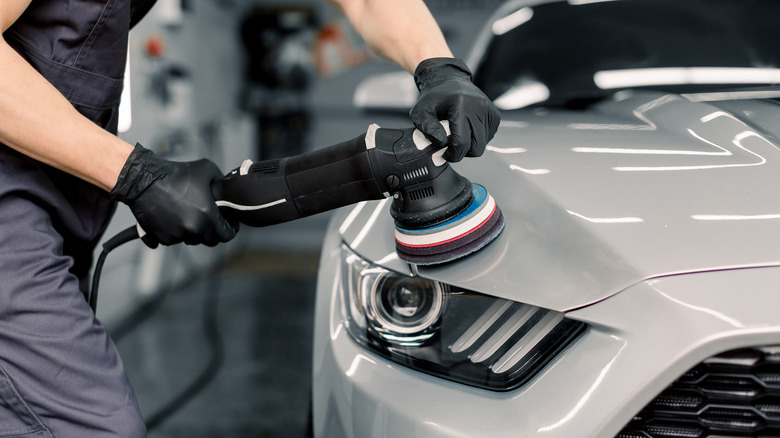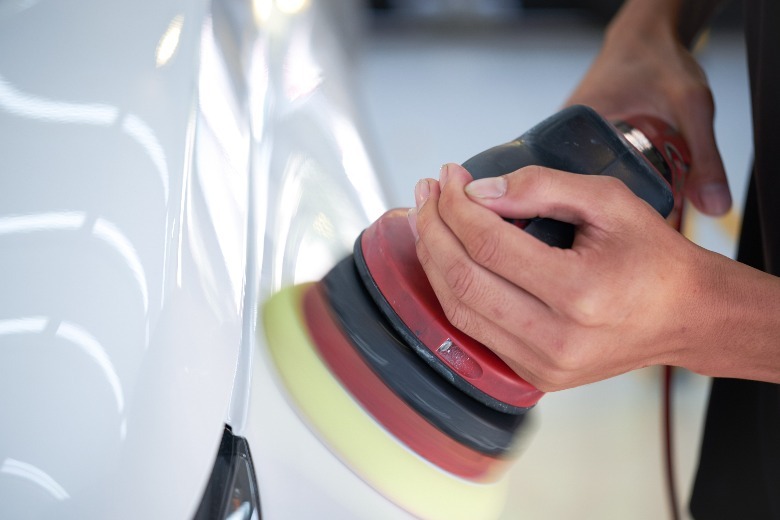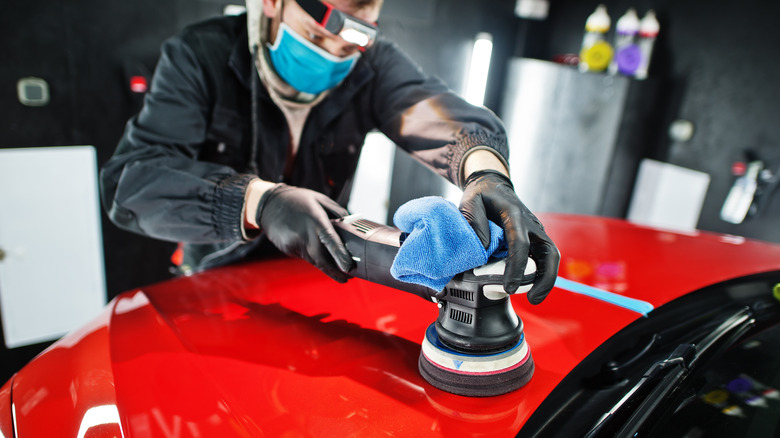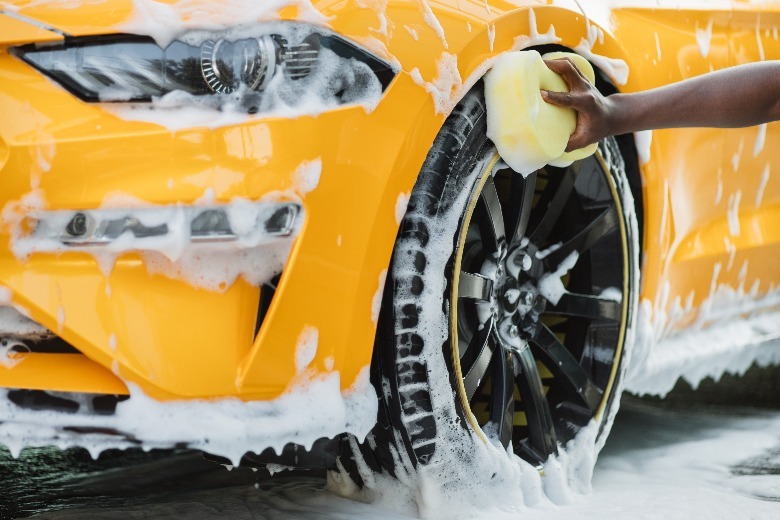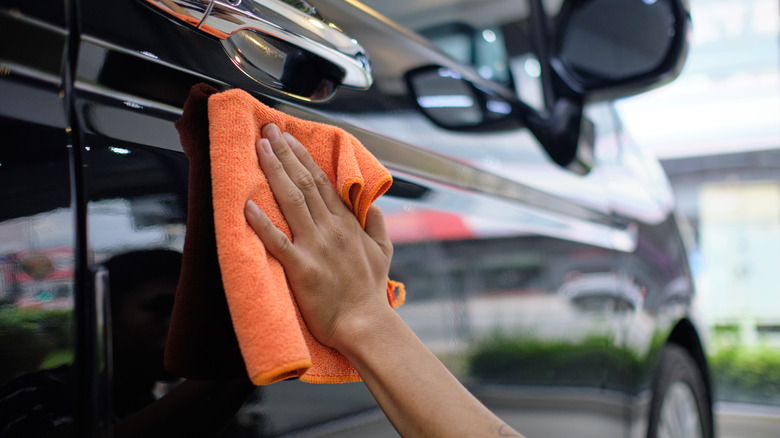Things You Need To Know Before Using An Orbital Polisher On Your Car
There are two primary types of machine polishers for cars: rotary and orbital. The former is no different from a typical angle grinder and has a spindle and pad that rotate together in a single direction. On the other hand, orbital polishers may sometimes look like dual-action sanders, but it has a pad and backing plate that spin at different axes than the spindle.
The market is brimming with many orbital polishers. Still, the most cost-effective solution is the dual-action random orbital polisher, more popularly known in the professional detailing industry as the DA polisher. The difference between a fixed orbital polisher (the type you see at the detailing aisle at Target or Costco) and a DA polisher is how the pad spins.
In a DA polisher, the pad spins on an offset axis than the spindle, creating a more efficient looping pattern over the paint. According to Turtle Wax, DA polishers are ideal for novice detailers and are the easiest to use without fear of "burning down" the finish. Moreover, the orbital motion and non-gear-driven motor of most DA polishers also mean the tool will stall when applying too much pressure as you work over the paint, preventing too much heat from damaging the finish.
Know your machine
Despite the idiot-proof nature of DA polishers, it's better to get acquainted with the specific features of your machine. For example, most DA polishers have a soft start feature to prevent wax or polish from slinging all over as you begin work, and most have multi-speed controls that spin at various speeds depending on the model of the DA polisher. When working with a new machine, take some time to test it out in an inconspicuous area before proceeding.
Our tip is to grab a spare hood or painted body panel from a junkyard and use it to practice your moves. Remember that slower polishing speeds combined with light polishing pads are ideal for soft paint. In comparison, higher speeds and more aggressive cutting pads (foam or microfiber) are better for more challenging (harder) paint finishes.
Start with a clean, decontaminated finish
The golden rule of waxing and polishing is to always start with a clean finish. It's worth noting that even if your car has a ceramic finish, you can still apply wax and polish. Then, give the vehicle a thorough wash using water and car shampoo. Next, consider decontaminating the paint with an iron remover and clay bar to remove deep-seated dirt and contaminants. Finally, dry the entire car with a microfiber towel.
After drying, take a few more moments to inspect the finish and gain more insight into the work needed to restore the paint. For example, if the finish has light scratches, swirl marks, and stains, you must polish the paint before waxing to achieve a like-new, glossy appearance. But for light paint colors like gray or white with minimal imperfections and scratching, applying a coat of wax is a solid option.
Buff by hand
Using a DA polisher to apply polish or wax is better than doing it by hand. But then again, removing excess wax should be done by hand using a microfiber towel. Remember that a little goes a long way, and you only need to apply three or four drops of wax or polish on the pad or every panel. After working the polish on the paint using your orbital DA polisher, remove the excess immediately by hand before the solution dries. Meanwhile, wax should be allowed to dwell and dry on the surface before hand-buffing the paint with a microfiber towel.
How long should wax dry out before removing? Here's a fail-safe tip: Run your bare finger over a waxed surface. The wax is dry if your finger removes most of the wax from the paint. But if you notice smearing or smudging, give the wax a few more minutes to dry before buffing.
Also, don't forget there's a difference between wax and polish. Unlike polish, wax has no abrasives and will not remove scratches and swirls. Keep this in mind the next time you grab that DA polisher to spruce up your ride.
